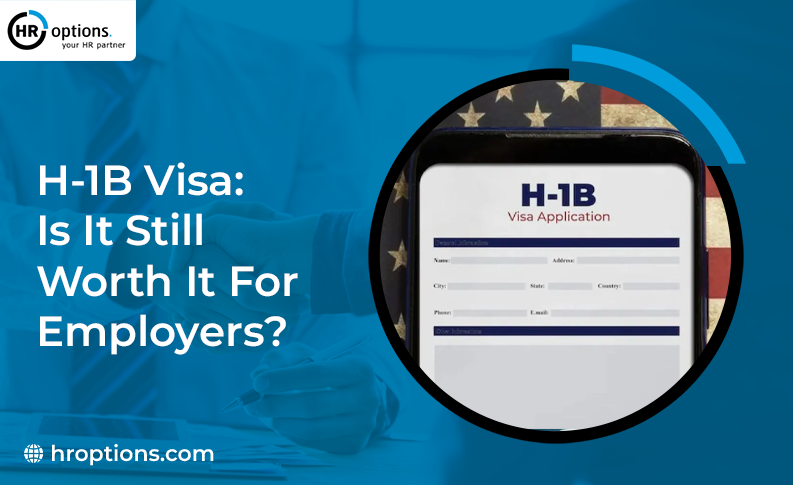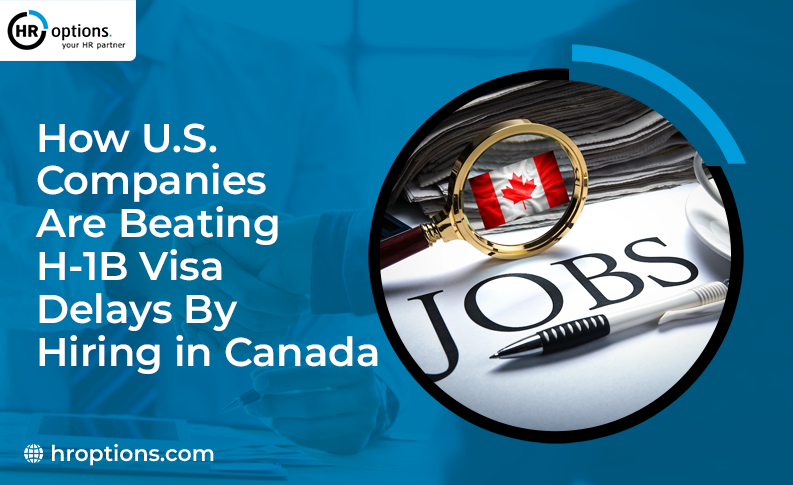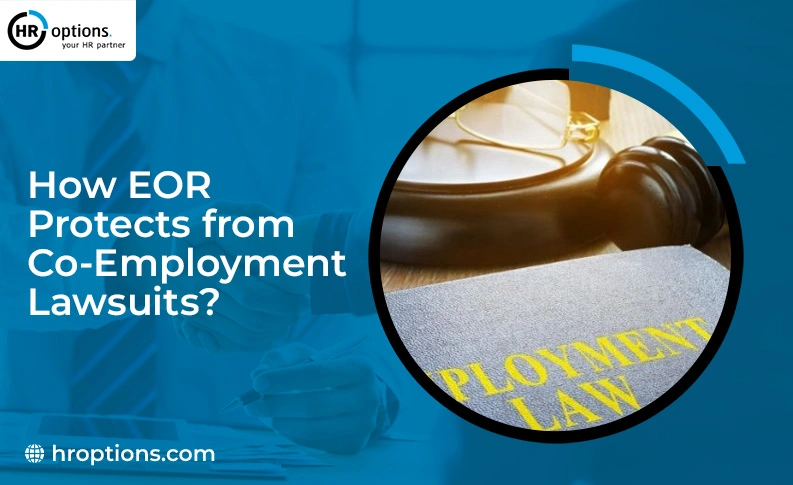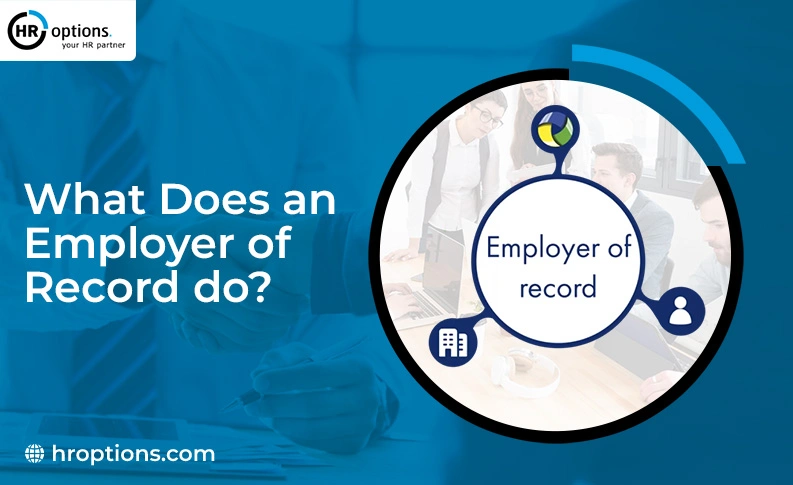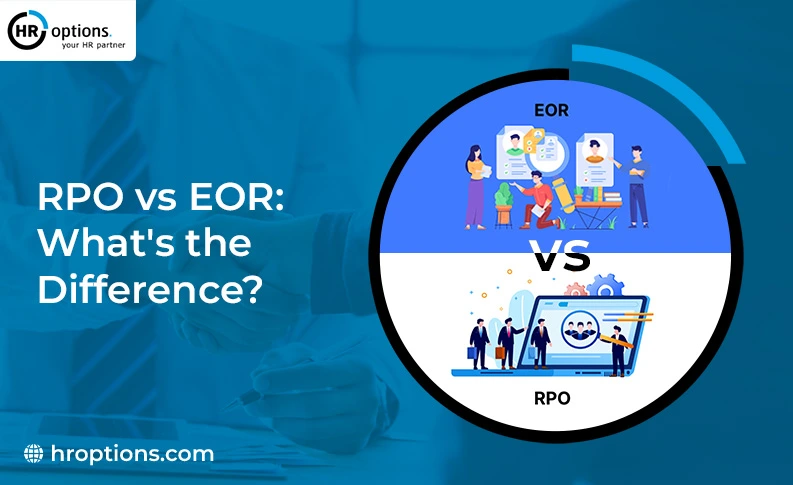The U.S. hiring landscape changed dramatically on September 19, 2025, when President Trump issued a new Proclamation titled “Restrictions on Entry of Certain Nonimmigrant Workers.”
The new policy proposal includes a potential $100,000 filing fee for most new H-1B visa petitions and adds restrictions on certain visa holders entering the country. For employers who rely on global talent, the move triggered immediate uncertainty and confusion about the future of skilled hiring in the United States.
Within days, agencies like USCIS, CBP, and the Department of State issued clarifications, but the damage was already done. Many employees returned before the effective date, while employers froze pending petitions. The question now confronting every HR leader and executive is simple: Is the H-1B visa still a smart investment, or is it time to look elsewhere for talent? Let’s understand if it is still worth it or how employers can find a better solution.
The $100,000 Visa Petition: A Wake-Up Call for Employers
The new Proclamation reportedly includes a one-time $100,000 filing fee for new H-1B petitions submitted after September 21, 2025. Existing visa holders and petitions filed prior to the deadline are unaffected, but any company planning to sponsor new foreign workers faces steep new costs. The fee comes in addition to standard USCIS filing, legal, and compliance fees, pushing the total cost of an H-1B hire well above $110,000 before salary expenses.
Government agencies attempted to calm confusion with late clarifications, confirming that the rule only applies to new petitions. However, the message to employers was unmistakable: the U.S. is tightening its visa system, and doing so quickly. The reported $100K filing requirement, combined with looming restrictions and selective exceptions, has forced organizations to question whether the H-1B pathway remains viable in 2025 and beyond.
Why Employers Are Calling the H-1B a “Gamble”
Here is why most employers are looking for an alternative to the H-1B visa to hire top talent:
1. High Costs with No Guarantees
The H-1B visa has always involved financial and procedural risk. But the new six-figure filing fee changes the equation.
Employers are reportedly expected to commit up to $100,000 in filing and related costs, with no refund if the petition is denied. Even with perfect paperwork and legitimate needs, approval is never guaranteed. For startups and mid-sized firms, this expense represents a major budget hit with uncertain return.
2. A Weighted Lottery That Favors High Salaries
The administration’s plan also directs federal agencies to revise the H-1B lottery system, giving preference to higher-paying roles and “highly skilled” workers.
That means the odds of success are now directly linked to the offered compensation. The traditional random lottery will give way to a “pay-to-play” environment, where only top-paying employers can justify the investment.
3. Shifting Wage Rules That Push Costs Even Higher
Reports of a $100K petition fee come alongside directives for the Department of Labor to raise H-1B prevailing wage levels under the new Proclamation.
Employers must pay whichever is higher: the new government-established wage for a role in that location or the salary paid to U.S. workers in equivalent positions. This means employers could face significantly higher payroll costs just to stay compliant.
4. Longer Processing Delays Ahead
The higher fee does not buy faster processing. In fact, new wage rules and additional review requirements are expected to slow adjudication timelines. USCIS (United States Citizenship and Immigration Services) workloads will rise as employers seek exceptions, submit appeals, and navigate complex wage verification steps. For companies with critical vacancies, waiting six to nine months for a decision is untenable.
5. Complex Exceptions and Unclear Implementation
An exception exists for petitions deemed to be in the “national interest,” but the process for qualifying remains vague. Like previous National Interest Exceptions during the COVID-era travel bans, approval will likely require extensive documentation and may be subject to political discretion. With little clarity on criteria or timing, employers are left guessing whether they can qualify, which creates another layer of uncertainty in an already expensive process.
The Talent Shift: Why Skilled Workers Are Looking North
As U.S. immigration rules tighten and costs rise, many global professionals are finding that Canada offers the stability and opportunity the U.S. once promised. Here’s why:
Canada’s Immigration Advantage
While the U.S. complicates its visa systems, Canada continues to simplify and expand access.
- Programs like the Global Talent Stream allow employers to hire skilled professionals in as little as two weeks, without a lottery or prohibitive filing fees.
- Canada’s Express Entry and Startup Visa programs also encourage foreign professionals to settle for the long term.
The result is clear: many high-skilled workers are now choosing Canada over other countries.
What This Means for U.S. Employers
For American businesses, this talent migration poses a competitive risk. Engineers, data scientists, and IT specialists who might have joined U.S. firms are finding attractive opportunities north of the border.
U.S. employers who fail to adapt could lose not only candidates but also innovation and expertise. The question isn’t just “how to get visas approved,” but “how to access the right talent without depending on visas at all.”
The Smarter Option: Hire in Canada Without the Hassle
Here’s what employers can do to get out of the chaos:
Work with Employer of Record (EOR)
The simplest way for U.S. businesses to hire Canadian talent is through an Employer of Record (EOR). An EOR acts as the legal employer in Canada, managing payroll, taxes, benefits, and compliance under Canadian law.
Meanwhile, the U.S. company retains full operational control over employees’ day-to-day work. This structure enables employers to hire quickly and legally without creating a Canadian subsidiary or navigating immigration barriers.
Benefits of Working with HR Options
Partnering with HR Options gives employers a direct path to global talent without hassle.
- Speed: Candidates can begin working in a matter of weeks.
- Compliance: Experts ensure full adherence to Canadian labor and tax laws.
- Cost Control: No $100K visa fees or legal setup costs.
- Continuity: Retain employees whose U.S. visas expire by relocating them to Canada seamlessly.
- Flexibility: Scale your Canadian team up or down as business needs evolve.
In short, it’s a faster, safer, and more cost-effective way to maintain access to global expertise.
Real-World Example: Turning Visa Risk into Opportunity
One U.S. software company budgeted over $100,000 for a new H-1B hire in 2025. When the Proclamation was announced, their legal advisors warned of delays and uncertainty.
Instead of proceeding, the company chose to hire a Canadian engineer through an EOR program. Within three weeks, the new employee was fully onboarded, compliant, and contributing to product development. The company simply transitioned the employee to work remotely from Canada under company rules.
Conclusion
The September 2025 Proclamation has transformed the H-1B visa from a complex process into a high-risk, high-cost wager. With a $100,000 entry fee, unpredictable adjudications, and rising wage thresholds, many employers can no longer justify the uncertainty. The goal of accessing global talent hasn’t changed, but the pathway to achieving it certainly has.
For forward-thinking U.S. companies, Canada represents both a safety valve and a strategic advantage. Through HR Options’ cross-border Employer of Record solutions, businesses can hire quickly and stay compliant without the financial gamble of a six-figure visa. Before you commit another dollar to an uncertain H-1B process, explore smarter hiring strategies that keep your team growing.
